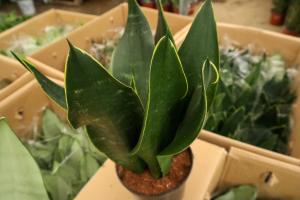How to Root a Spider Plant
Spider plants are popular houseplants because they are easy to grow and can survive in a variety of conditions. They also produce "babies" or small plantlets that can be easily propagated into new plants. If you want to root a spider plant, there are a few things you need to do to ensure success. Here's a step-by-step guide on how to root a spider plant.
Materials You'll Need:
- A spider plant with plantlets
- A sharp knife or scissors
- Potting soil
- A small pot or container
- Water
- A spray bottle
- Optional: rooting hormone
Step 1: Choose Your Plantlet
First, choose a healthy plantlet from your spider plant. Make sure it has a few leaves and roots growing out of it. The plantlet should be at least 2-3 inches long.
Step 2: Prepare Your Potting Soil
Next, prepare your potting soil. Spider plants prefer well-draining soil that is rich in organic matter. Mix equal parts potting soil, perlite, and vermiculite together to create a lightweight and porous soil mix.
Step 3: Remove the Plantlet
Using a sharp knife or scissors, cut the plantlet away from the mother plant. Make sure to cut as close to the base of the plantlet as possible without damaging the roots or leaves.
Step 4: Prepare the Pot
Fill a small pot or container with your prepared potting soil. Make a small hole in the soil with your finger or a pencil, just deep enough to hold the root of the plantlet.
Step 5: Plant the Plantlet
Place the plantlet into the hole in the soil, making sure the roots are covered completely with soil. Gently press the soil around the base of the plantlet to secure it in place.
Step 6: Water the Plantlet
Water the newly planted plantlet until the soil is moist but not soaking wet. Use a spray bottle to mist the leaves of the plantlet. This will help prevent the leaves from drying out while the plantlet establishes roots.
Step 7: Provide Proper Care
Place the planted spider plant in a well-lit area that receives indirect sunlight. Water the plantlet whenever the soil feels dry to the touch, but be careful not to overwater it. Spider plants prefer to be slightly dry rather than too moist.
Optional Step: Use Rooting Hormone
If you want to give your spider plantlet an extra boost, you can use rooting hormone to help it establish roots faster. Simply dip the cut end of the plantlet in rooting hormone before planting it in the soil.
In conclusion, rooting a spider plant is a simple and rewarding process. By following these steps, you can easily propagate your spider plant and create new plants to share with friends or keep for yourself. Remember to be patient, provide proper care, and your spider plantlets will establish roots and grow into healthy plants in no time.

 how many times do yo...
how many times do yo... how many planted tre...
how many planted tre... how many pine trees ...
how many pine trees ... how many pecan trees...
how many pecan trees... how many plants comp...
how many plants comp... how many plants can ...
how many plants can ... how many plants and ...
how many plants and ... how many pepper plan...
how many pepper plan...






























